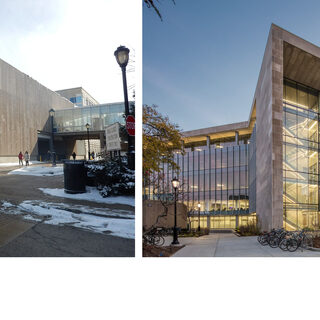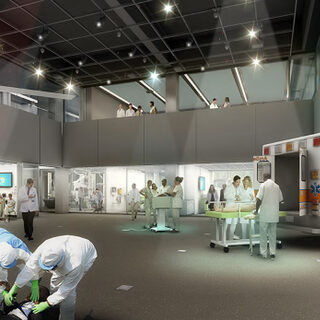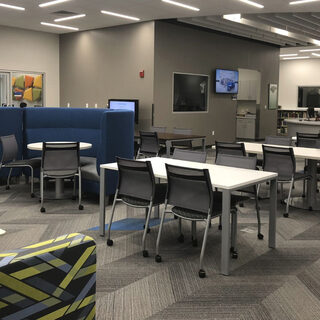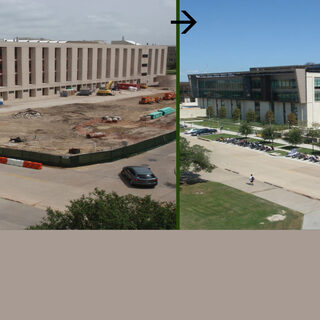Tradeline's industry reports are a must-read resource for those involved in facilities planning and management. Reports include management case studies, current and in-depth project profiles, and editorials on the latest facilities management issues.
Latest Reports
Northwestern University Solves Space Quandary with Vertical Expansion and Complete Overhaul of Existing Building
Northwestern University is continually working to grow and improve the quality of its research space inventory. A 2017 renovation and expansion of the Seeley G. Mudd Science and Engineering Library—situated in a prime location on the Evanston, Ill., campus—transformed a non-science building into a focal point of the university’s science complex. A desire to maximize research space within the constrained site resulted in a unique solution that leveraged both horizontal and vertical expansion.
Designing Diverse Learning Environments and Maker Spaces
Multi-disciplinary project-based learning has changed how and where student activities occur, and institutions have responded by creating novel labs, teaching facilities, gathering areas, and maker spaces designed for students and faculty across diverse disciplines—engineering, life sciences, and liberal arts. A number of projects throughout the country highlight important design considerations—including location, flexibility, adaptability, and transparency—that suit new ways of learning and provide universities with opportunities for marketing and recruitment. Post-occupancy data from the University of North Carolina provides real-world findings that can help others improve the design of current and future maker spaces.
San Diego State University Advances STEM Program with Collaborative Engineering Facility
The new Engineering and Interdisciplinary Sciences (EIS) complex at San Diego State University (SDSU) was developed to create a modern hub of STEM-focused lab facilities that will enhance the university’s reputation as a leading research institution capable of attracting top researchers and students in a variety of disciplines. The multi-wing complex includes seven engineering teaching labs and 17 interdisciplinary research spaces focused on wireless technologies, energy, and bio-medical engineering, as well as viromics (viral metagenomics)—the study of virus gene sequencing and virus protein structures—which was pioneered by researchers at SDSU. In addition to providing a shared research core, the facility houses an MRI suite and a future materials science imaging center. The complex will focus on everything from developing artificial limbs and wearable health sensors to improving drone technology and finding better ways to screen for harmful microbes. A collocated entrepreneurship center with product and business development support will help bring new technologies and products to market.
Nova Southeastern University Supports Students’ Changing Needs with Continual Expansion and Innovative Design Strategies
Educating healthcare professionals in a manner that crosses disciplines and fosters teamwork for the advancement of public health is more than a mission statement for Nova Southeastern University (NSU) in Florida. It is an inherent objective in recent and ongoing construction projects on the main Davie Campus in Fort Lauderdale and at the regional campuses in Jacksonville; Miami; Miramar; Orlando; Palm Beach; Fort Myers; Tampa; and San Juan, Puerto Rico.
Texas A&M Facility Doubles Engineering Capacity for Ambitious Enrollment Plan
Texas A&M University is addressing the rising demand for engineers by transforming a traditional 46-year-old academic building into a state-of-the-art facility, where technology is not just an aid, but a driver. The Zachry Engineering Education Complex, on the College Station campus, is the cornerstone of Texas A&M’s ambitious “25 by 25” initiative—a plan to enroll 25,000 engineering students by 2025.





